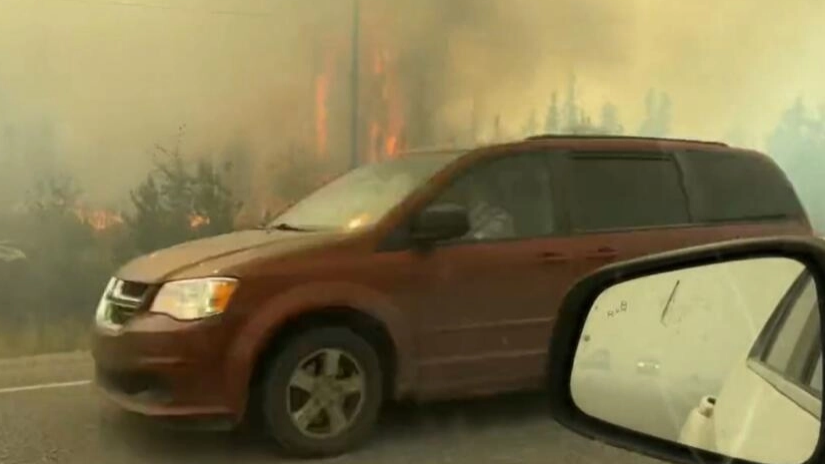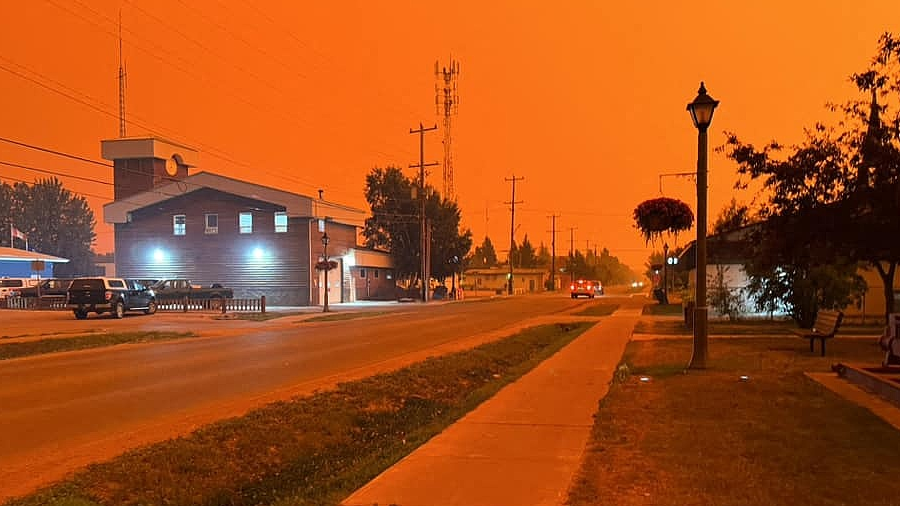
This screengrab from a video shows vehicles fleeing on the highway out of Yellowknife, Canada, August 17, 2023. /AFP
This screengrab from a video shows vehicles fleeing on the highway out of Yellowknife, Canada, August 17, 2023. /AFP
Canadian Prime Minister Justin Trudeau convened an emergency meeting on Thursday to discuss the wildfire crisis in the Northwest Territories, where residents are leaving after an evacuation order.
Defense Minister Bill Blair, speaking to the Canadian Broadcasting Corp (CBC) after the meeting, said the federal government was closely monitoring the evacuations and was prepared to quickly airlift residents if land routes get cut off.
Mass evacuation of areas in the territory is ongoing, including the capital city of Yellowknife, the territory's largest community with a population of more than 20,000. Residents were ordered to leave by noon Friday.
This is Canada's worst-ever wildfire season with more than 1,000 active fires burning across the country, including 265 in the Northwest Territories. Experts say climate change has exacerbated the wildfire problem.
Drought has been a contributing factor to the number and intensity of this year's fires, officials say, with high temperatures exacerbating the situation. Much of Canada has seen abnormally dry conditions.

The town of Fort Smith in an orange haze as wildfires sweep Canada's far north, August 13, 2023. / AFP
The town of Fort Smith in an orange haze as wildfires sweep Canada's far north, August 13, 2023. / AFP
About 134,000 square kilometers (52,000 square miles) of land in Canada have been scorched so far, more than six times a 10-year average. Nearly 200,000 people have been forced to evacuate at some point this season.
"The territories have never seen anything like this before in terms of wildfire, it's an unimaginable situation for so many," Mike Westwick, the territories' fire information officer, told the CBC.
The blazes have also affected industrial and energy production. Diamond producer De Beers said in a statement that its Gahcho Kue mine, some 280 km (170 miles) northeast of Yellowknife, continued to operate although a number of employees from surrounding communities had been evacuated.
In May 2016, a huge fire destroyed 10 percent of structures in the northern energy-producing Alberta city of Fort McMurray, forcing the evacuation of 90,000 residents and shutting in more than a million barrels per day of oil output.
In June 2021, 90 percent of the structures in the British Columbia village of Lytton burned down, a day after it recorded Canada's hottest-ever temperature.
Since 2009, Canada has been spending more on fighting and suppressing wildfires than on maintaining its firefighting personnel and program.
(With input from agencies)